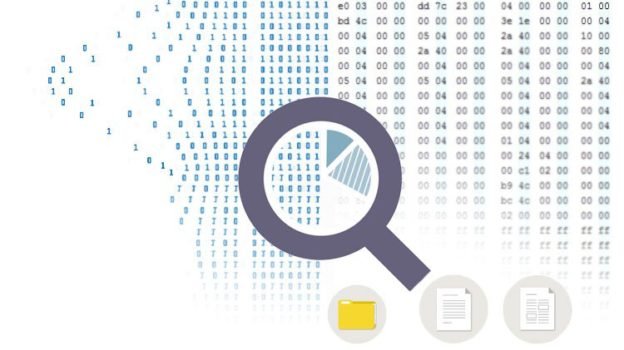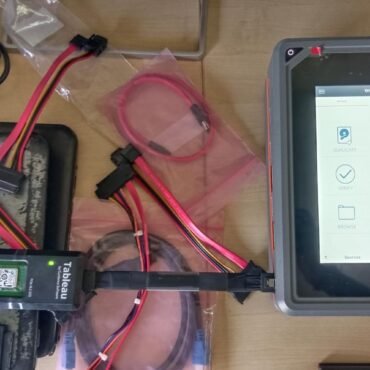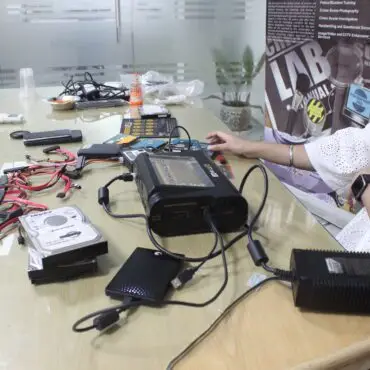
USB and External Drive Forensic: Unlocking Portable Evidence
Introduction — why portable drives matter USB sticks and external drives are everywhere: employees carry them, users back up to them, and threat actors use them to move data or ...


Data Recovery Omprakash Singh todayOctober 3, 2025

In the digital age, data is one of the most valuable assets. From personal photos to critical business documents, losing data can be devastating. Fortunately, advancements in digital forensics and data recovery have made it possible to restore files that were once thought to be gone forever. One of the most powerful methods in this domain is file carving.
But what exactly is file carving, and how does it work? Let’s break down the science behind this technique.
File carving is a data recovery technique used to reconstruct files from unallocated, fragmented, or corrupted storage space—without relying on file system metadata. In simple terms, when files are deleted, the file system often only removes the reference to the file, not the actual data. File carving digs into raw data sectors of a storage device and pieces the information back together like solving a jigsaw puzzle.
It is widely used in:
Digital forensics investigations (criminal cases, fraud detection)
Data recovery services (accidental deletions, formatting, or corruption)
Cybersecurity incidents (retrieving compromised or encrypted files)
Every file type—such as JPEG, MP4, PDF, or DOCX—has a unique structure and a file signature. File carving tools search for these headers (starting point of a file) and footers (end point of a file) in raw data. For example:
JPEG files start with FFD8 and end with FFD9.
PDF files begin with %PDF and end with %%EOF.
By identifying these patterns, file carving tools can extract and rebuild the data between them.
When a file is fragmented across multiple areas of a hard drive, carving becomes more complex. Instead of a neat block of data, the file pieces are scattered. Forensic experts use algorithms and heuristics to identify continuity in data blocks, ensuring fragments are pieced together correctly.
There are two main approaches to file carving:
Header/Footer Carving: Relies on file signatures to detect file boundaries. Effective for many file formats but limited if headers/footers are missing.
Content-Based Carving: Uses internal file structure and patterns (like pixel arrangements in images or keywords in documents) to reassemble files even without clear boundaries.
Modern file carving leverages machine learning and statistical analysis to improve accuracy. Popular forensic tools like Scalpel, Foremost, and Autopsy automate the carving process, scanning through massive volumes of data to recover deleted files efficiently.
Criminal Investigations: Helps uncover deleted images, documents, or videos as digital evidence.
Corporate Security: Recovers files in fraud, data breaches, or employee misconduct cases.
Personal Data Recovery: Restores lost family photos, videos, and essential documents after accidental deletion.
Disaster Recovery: Retrieves files from damaged storage devices after crashes or corruption.
Despite its power, file carving has challenges:
Files may be partially overwritten, leading to incomplete recovery.
Highly fragmented files are difficult to reconstruct.
Without metadata, file names, timestamps, and folder structures are often lost.
File carving stands as a cornerstone in digital forensics and data recovery. It bridges the gap between lost hope and recovered evidence, ensuring that crucial information—whether personal memories or legal proof—is not permanently lost.
As technology advances, file carving techniques continue to evolve, offering more accuracy, efficiency, and reliability in the ever-growing world of digital data.
Key Takeaway:
File carving is not just about recovering deleted files; it’s a science that combines knowledge of file structures, algorithms, and forensic expertise to breathe life back into seemingly lost data.
Written by: Omprakash Singh
Tagged as: data recovery, File Carving, Digital Forensic, file carving data recovery, data recovery service.

Digital Forensics Omprakash Singh
Introduction — why portable drives matter USB sticks and external drives are everywhere: employees carry them, users back up to them, and threat actors use them to move data or ...

Blog Omprakash Singh

Data Recovery Omprakash Singh
Copyright 2016-2025 all rights reserved by Hawk Eye Forensic.
Post comments (0)